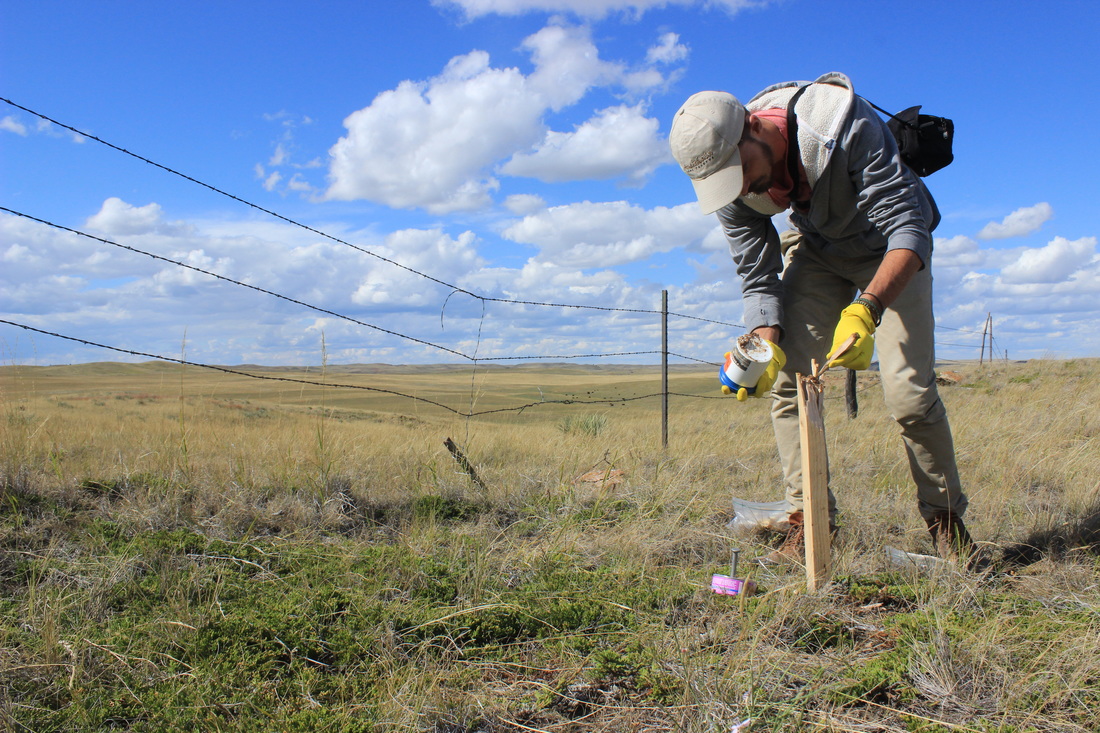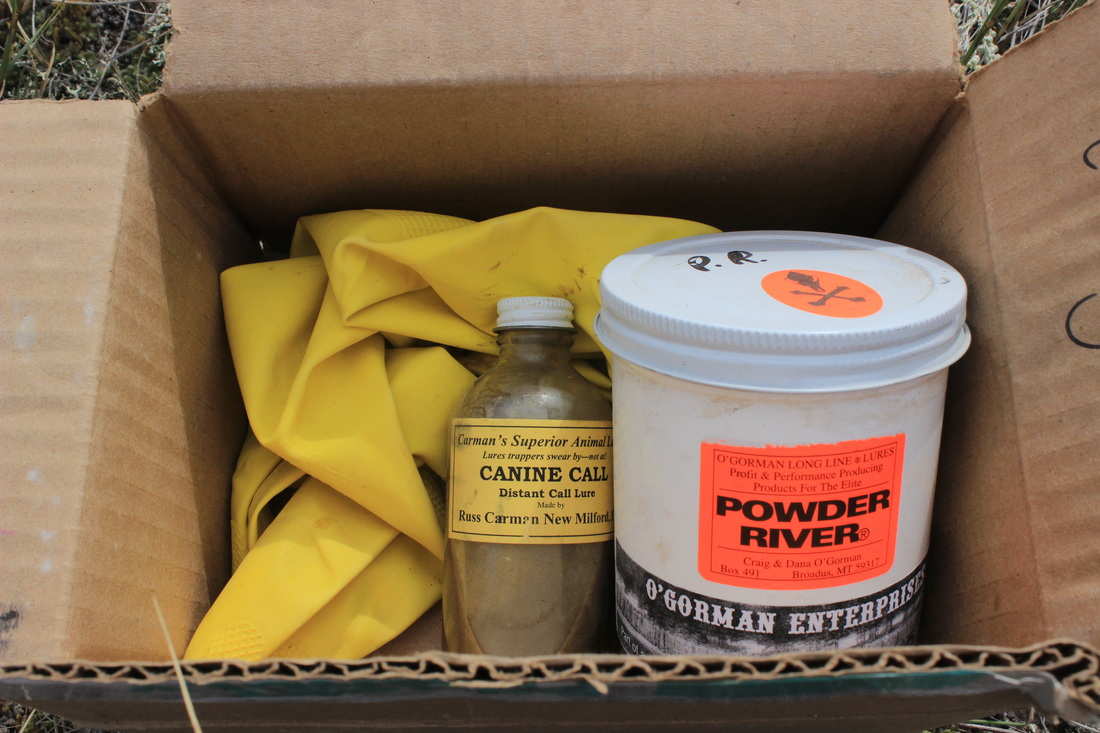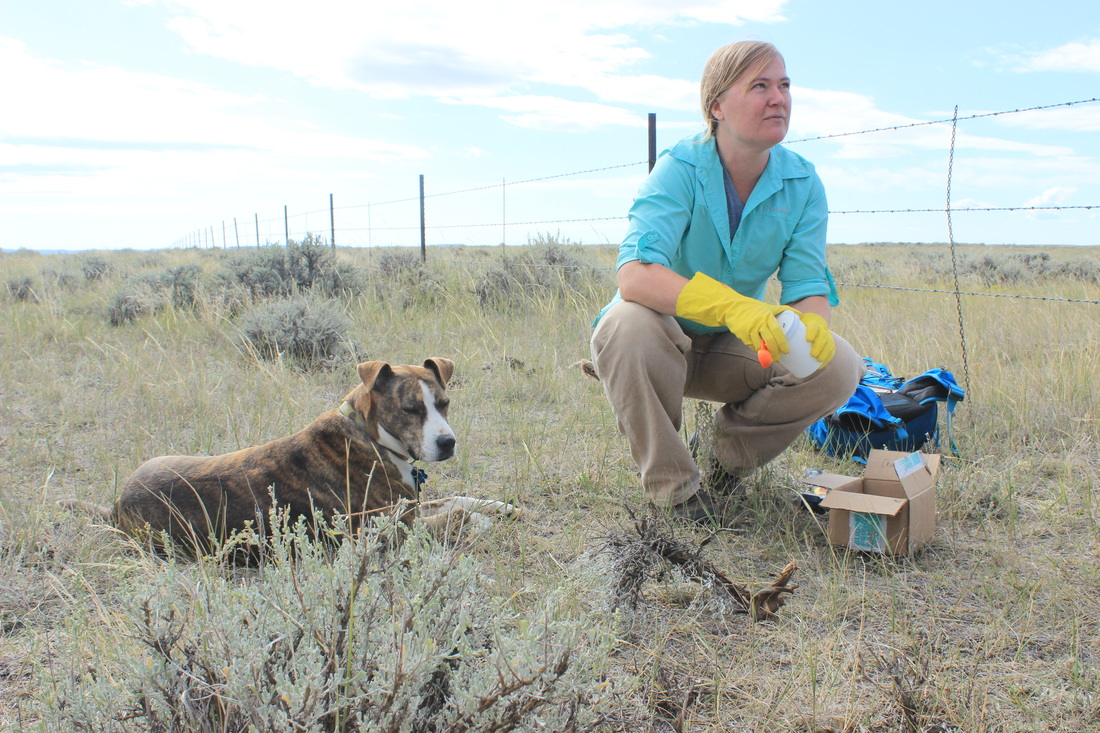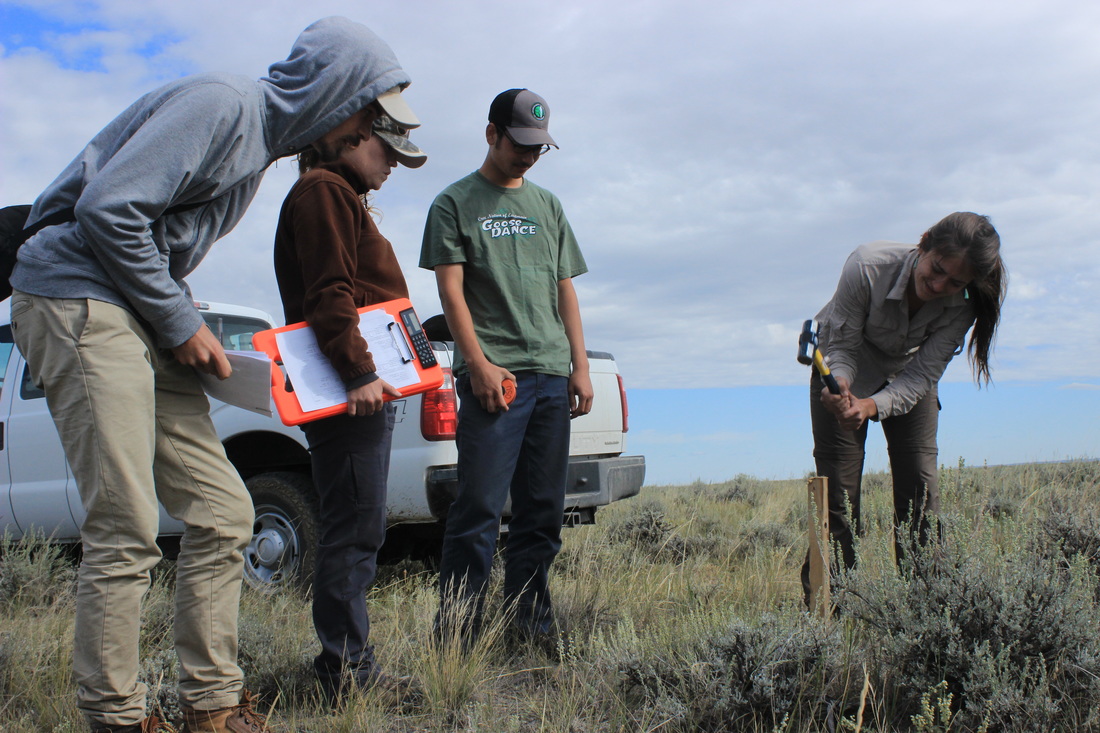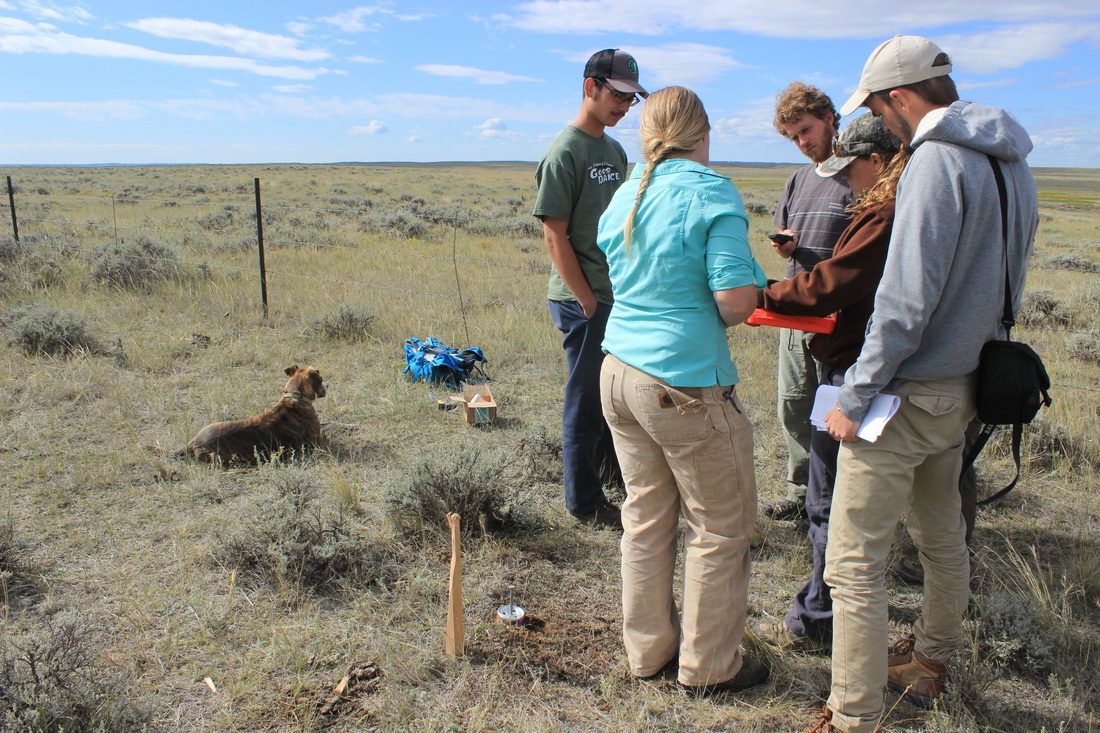ASC Landmark Crew Member
The odor that emanates from the back of our work vehicle has our five noses stuck out the windows, in hopes that the fresh prairie air will ease our nausea. We have gone so far as to wrap a sleeping bag around the plastic tub that carries “the goods” to smother the scent.
To me, the smell is reminiscent of skunk, but the true ingredients are in fact a mystery. The companies that make these lures won’t even reveal their contents.
This odiferous experience was a seasonal Landmark project, done in partnership with swift fox researcher Doni Schwalm. Schwalm is leading a survey to determine the current distribution of Vulpes velox in Montana.
Based on the collected data, Schwalam will develop a restoration strategy for these canids.
Through my fresh eyes on the American Prairie Reserve, I would believe this land has endless swift fox habitat. During our time with Schwalam and her field assistant Bri Kerfoot, we set camera traps and learned about the science of luring a 16-inch-tall fox to a wooden stake to get it to relieve itself on a can of cat food.
Eager to help and see what we could find, we proceeded with the protocol…
Step 1. Find habitat and survey site. The Landmark crew was given nine total survey points spaced apart on a grid point system located within potential swift fox habitat. The data we used was based on a GIS habitat suitability model from World Wildlife Foundation, so essentially, we were ground-truthing the sites to make sure the survey point was along a fence line in short grass prairie or near open fields.
Step 2. Measure 10 feet from fence post to mark where the wooden stake will stand.
Step 3. Hammer wooden stake into the ground leaving 16 inches (the average height of a swift fox) aboveground, so when the fox reaches for the bait, it will be visible on camera.
Step 4. Record details of survey site, including location, ground cover, grass height, direction of camera, etc.
Step 5. Set camera to specific standards and be sure grass waving in the wind will trigger it.
Step 6. Pound three holes in each side of can of cat food, and then spike it into the ground 2-3 inches in front of the wooden stake.
Step 7. Smear lure (aka “the goods,” which looks like sludge) on the top of the wooden stake and at random between the stake and camera.

